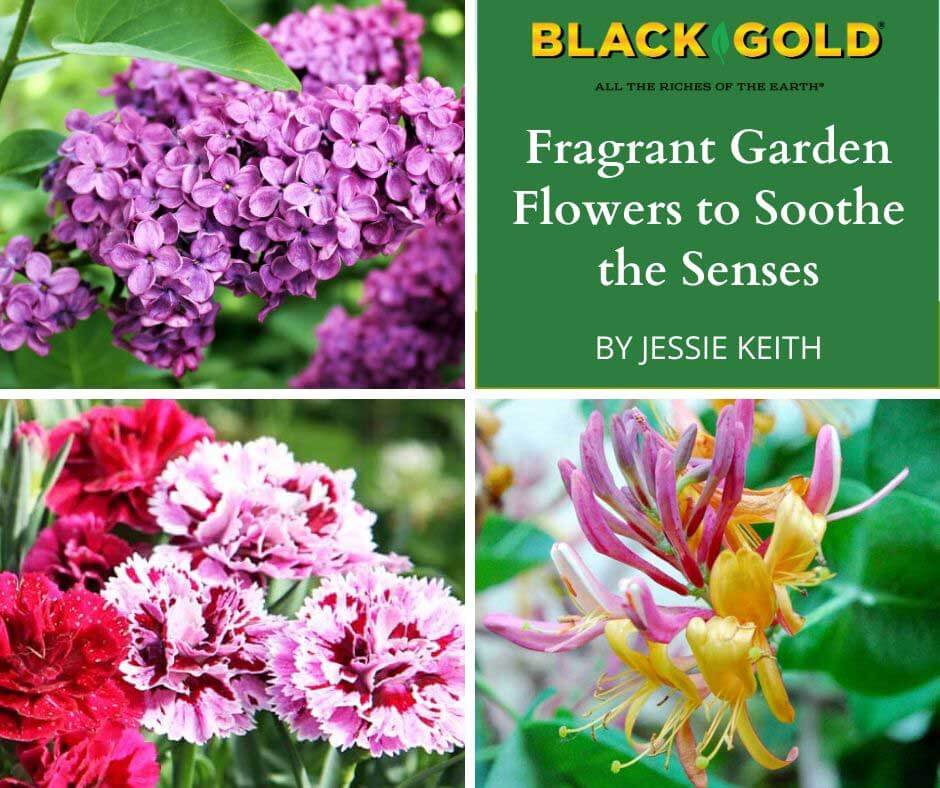
Close your eyes and step into the garden. What do you smell? If you plant for aroma, you can be guided through your garden blindfolded and know what plants are there. Honeysuckle, hyacinths, lavender, and roses are as aromatically distinctive as they are visually distinctive. Fragrant garden flowers like these soothe the senses and provide a feeling of respite and calm.
Flowers are scented to lure pollinators from afar to ensure blooms are visited, pollinated, and seeds set for reproduction. Not all flowers are scented because not all pollinators have a sense of smell. In general, bees, bats, butterflies, and moths detect scents and are attracted to odorous flowers. Flowers that are night-pollinated, such as moonflower and woodland tobacco, are some of the most fragrant because night pollinators rely more heavily on smell. But, some daytime flowers, like clove pinks, honeysuckles, lilacs, and musk roses, are also highly aromatic.
Fragrant garden flowers evoke happy memories and soothe the senses. If a fragrant garden is important to you, here are some seasonal blooms that emit their enjoyable fragrance into the air to fill a space.
Scented Spring Flowers
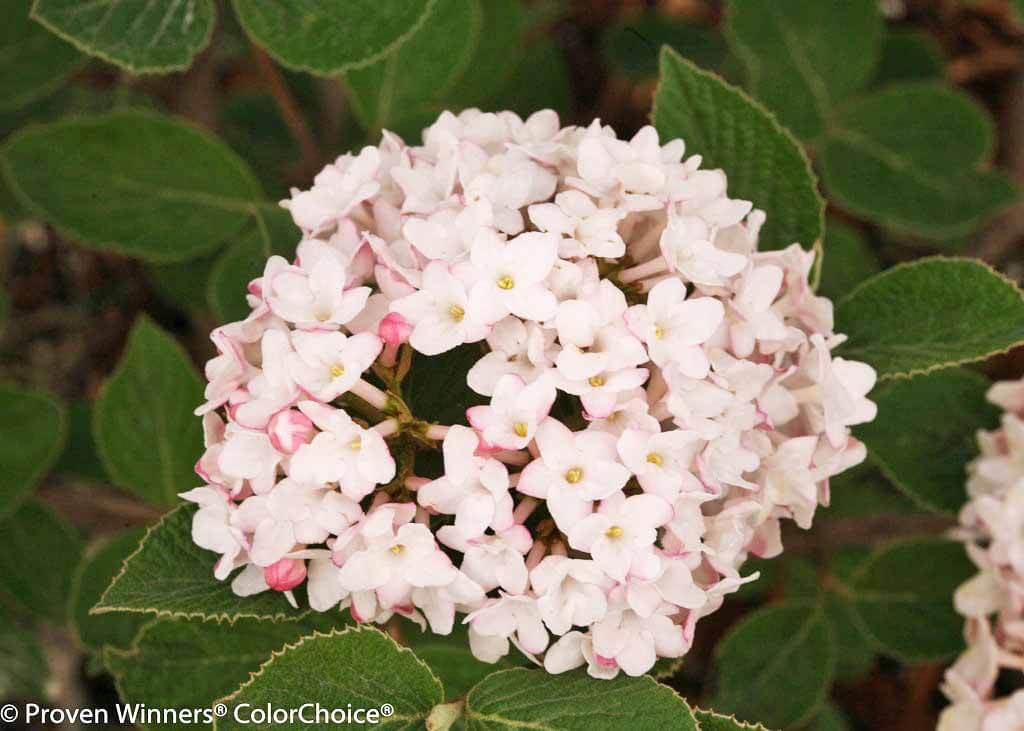
Korean Spice Viburnum (Viburnum carlesii, USDA Hardiness Zones 5-8) – Viburnums are shrubs that are typically spring bloomers with flower clusters that offer some fragrance, but Korean spice viburnum has a spicy-sweet aroma that passersby can’t miss. Uncultivated forms reach 6 to 10 feet, but there are smaller types suited to less spacious gardens. Spice Baby™ is one that reaches between 4 and 5.5 feet and has large clusters of pinkish-white flowers that will fill the air with scent in early to mid-spring.
Eternal Fragrance Daphne (Daphne × transatlantica Eternal Fragrance™, Zones 6-9) – After smelling this small, semi-evergreen shrub for the first time, I had to have one. Its clusters of palest pink flowers bloom over a long period in spring and smell so sweetly they cannot be resisted.
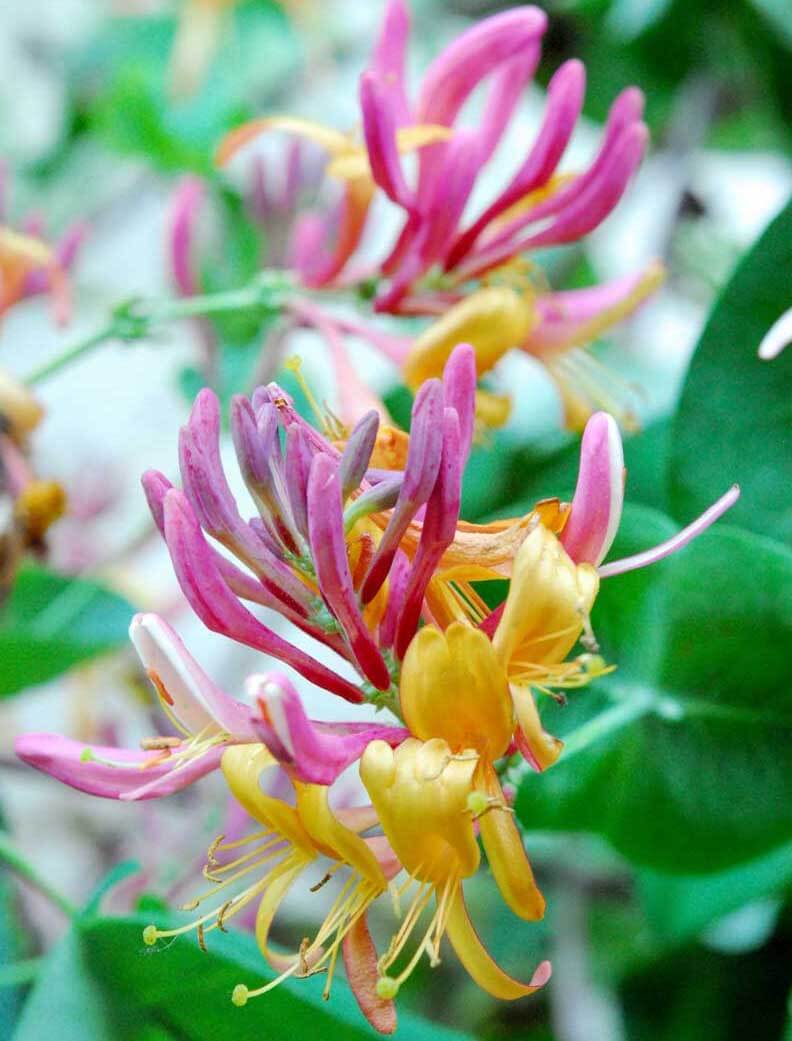
Goldflame Honeysuckle (Lonicera x heckrottii ‘Goldflame’, Zones 4-9) – The classic Japanese honeysuckle is pretty and wonderfully fragrant but an invasive brute that takes over gardens and wildlands. There are others, like the fantastically beautiful and fragrant ‘Goldflame’, which have it all without being intrusive. If you are looking for a nonstop vine for fragrance, it blooms from spring to fall. Just be sure to offer it space and prune it back as needed because its vines can reach up to 15 feet. Hummingbirds and moths visit the flowers.
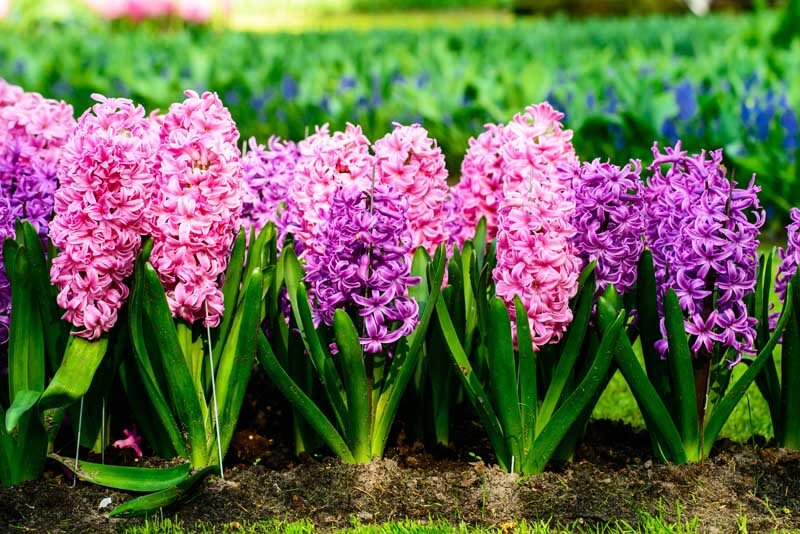
Hyacinth (Hyacinthus orientalis, Zones 4-8) – Traditional hyacinths appear in early spring with their colorful, upright, 1-foot stems covered with fragrant, tubular flowers of orange, pink, rose-red, violet-blue, white, or yellow. Plant these bulbs in fall for a colorful spring show and aromatic treat.
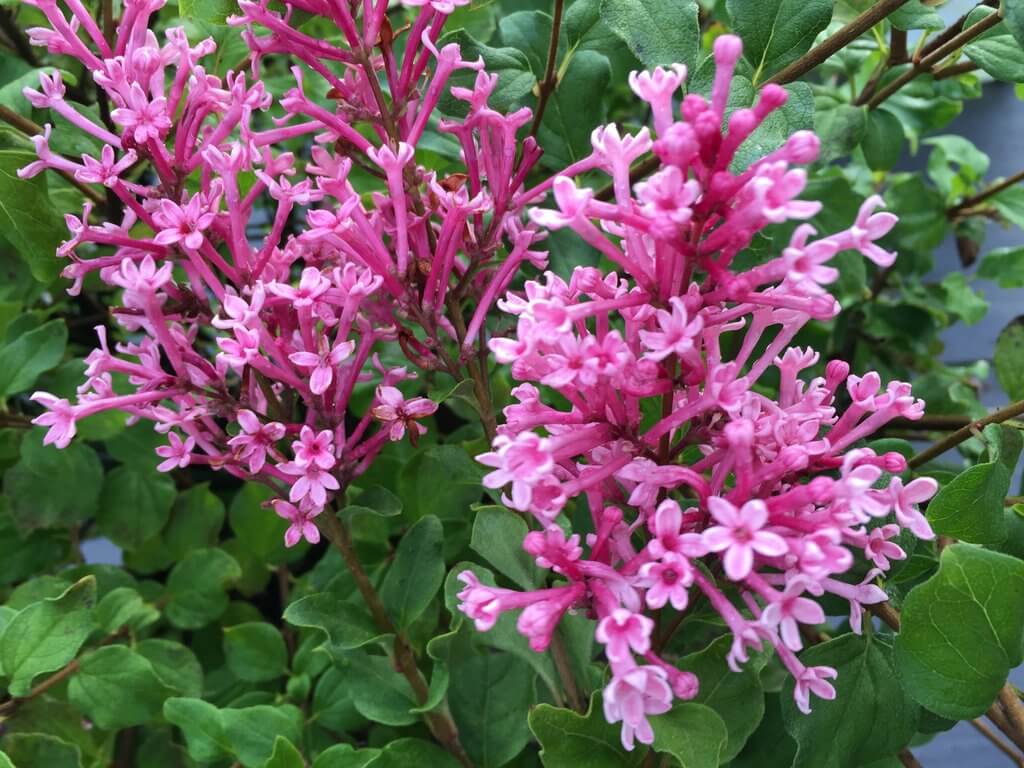
Lilac (Syringa hybrids, Zones 3-8) – Everyone loves the smell of lilacs, and the old-fashioned varieties have some of the best fragrance. (Click here to learn more about growing and enjoying traditional lilacs.) Some newer types also have extra fragrance. The spring-flowering Scentara® Double Blue is one of these with its clusters of double, lilac-blue flowers that emit the best lilac smell. The reblooming, pink-flowered lilac Bloomerang® Dwarf Pink is one that just reaches 3 feet and also offers a fine fragrance.
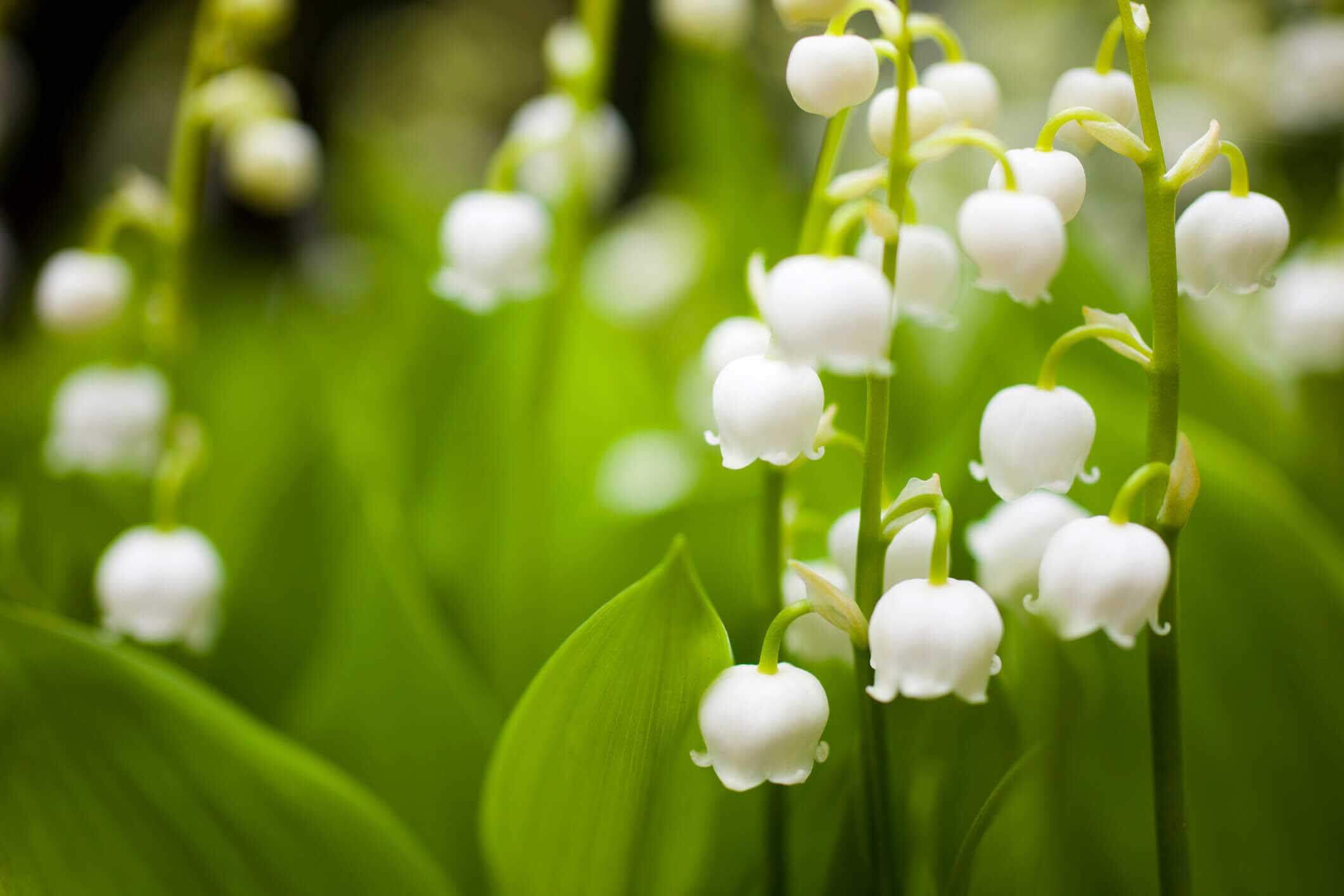
Lily-0f-the-Valley (Convallaria majalis, Zones 2-9) – The upside of shade-loving lily-of-the-valley is that it has one of the most renowned scents of all. Still, gardeners must understand that it is a fast-spreading groundcover before adding it to the garden. Once planted, it is difficult to remove. But, it is beautiful, especially when its curved wands of nodding flowers bloom in spring scenting the entire yard.
Scented Summer Flowers
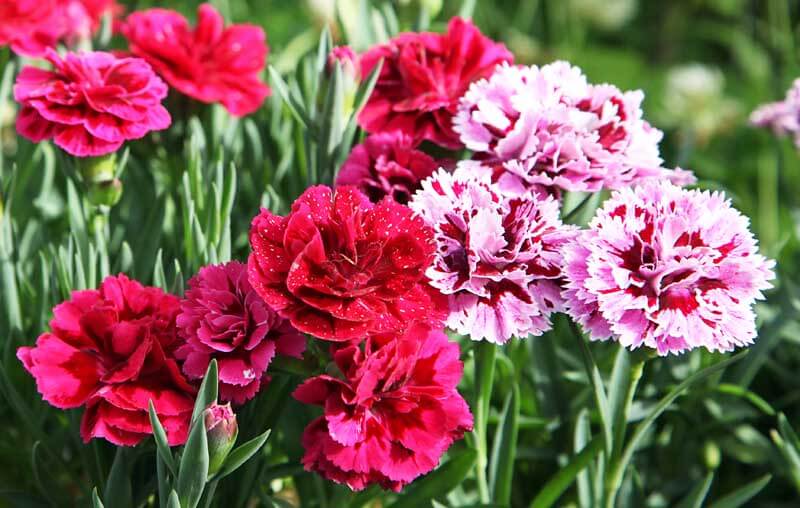
Clove Pink (Dianthus hybrids, Zones 5-9) – Old-fashioned pinks that smell of sweet clove are back in fashion. Popular plant vendors are breeding new types that bloom for longer but look like they came out of a 1900s flower catalog. The English Devon Cottage™ ‘Pinball Wizard’ is one with cuttable, carnation-like flowers with a powerful sweet clove fragrance. Those in Proven Winners’ Fruit Punch® series are also highly fragrant, long-blooming, and come in many grand colors.
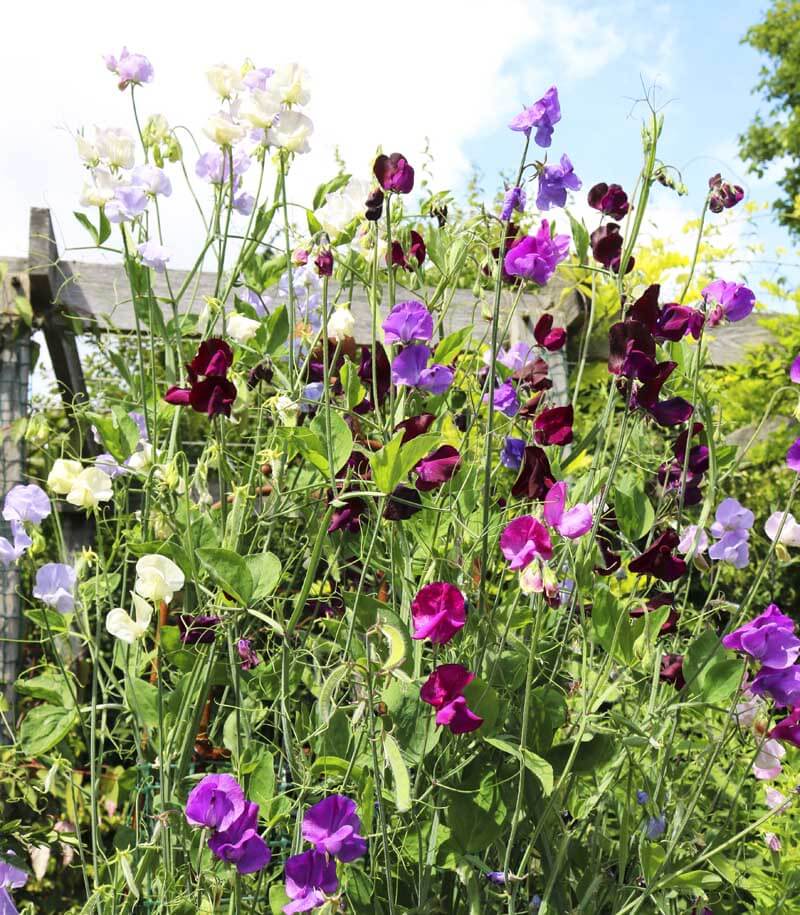
Sweet peas (Lathyrus odoratus) – Commonly planted from seed as spring annuals, sweet peas grow best where summers are milder and don’t have scorching temperatures. Their flowers come in lots of colors and emit a distinct sweet fragrance that bees love. They are most fragrant in the evening, so plant them near a porch or patio to be enjoyed. Sweet pea lovers should try the Sweet Pea ‘Heirloom Fragrance’ Seed Collection from Select Seeds.
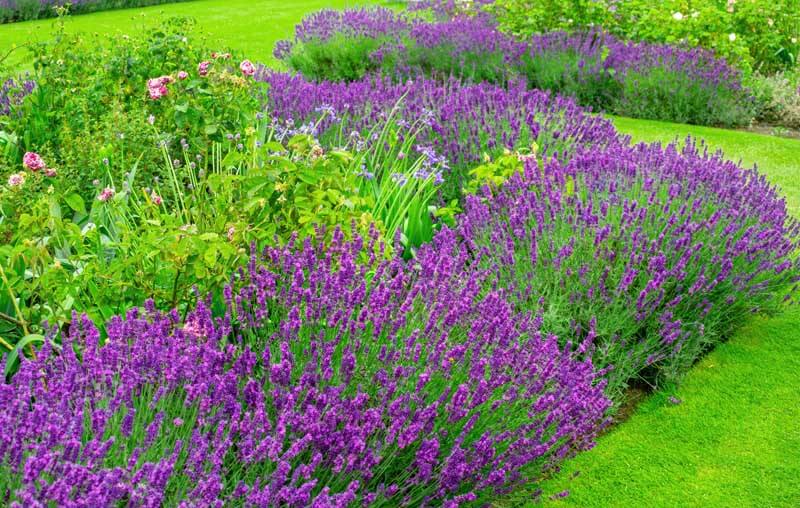
Lavender (Lavandula species) – All lavenders have fragrant foliage and flowers, but species vary widely in hardiness. I favor compact, hardier forms, such as ‘Munstead’ (Lavandula angustifolia ‘Munstead’, Zones 5-9) with its wonderfully fragrant lavender-blue flowers, and ‘Hidcote’ (Lavandula angustifolia ‘Hidcote’, Zones 5-10), which has silvery foliage and lovely lavender flowers. Be sure to grow them in very well-drained soil and full sun. (Click here to learn more about growing different lavenders.)
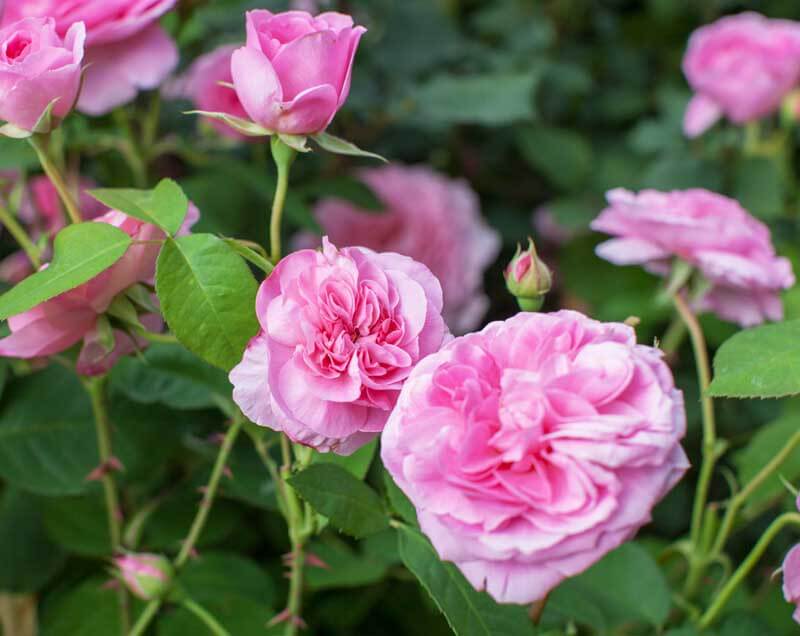
Roses (Rosa hybrids) – When choosing a rose for fragrance, keep in mind that not all are fragrant. Many hybrids bred for disease resistance, and repeat bloom lack the classic scent that we associate with roses. English roses with a strong fragrance, particularly David Austin Roses, are some of my favorites. The flouncy ‘Gertrude Jekyll‘ (Zones 4-11) is a highly-scented, reblooming pink variety that BBC Gardener’s World viewers voted as England’s favorite rose. It’s a good one for any garden. (Click here to learn how to care for roses organically.)
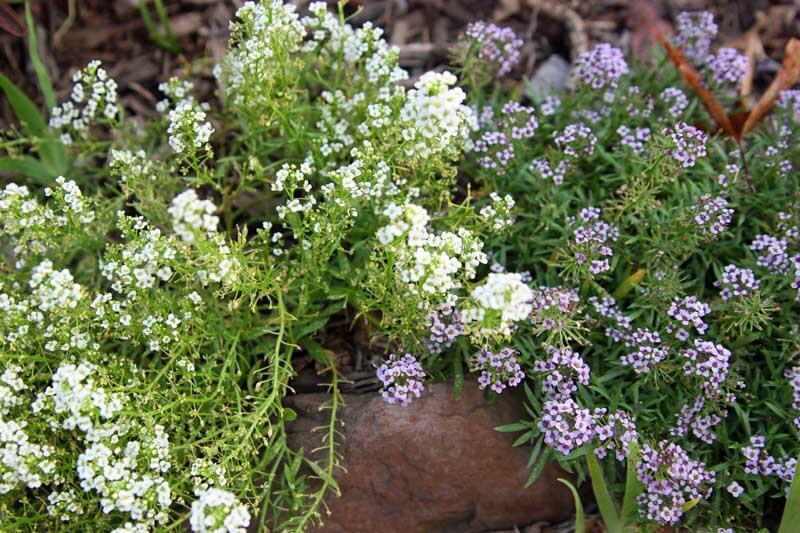
Sweet Alyssum (Lobularia maritima) – Named for its honey and spice-scented flower clusters that bloom from spring to fall, sweet alyssum is a favorite bedding and container plant. It is versatile, low and spreading, and can withstand the cool temperatures of spring and fall as well as the heat and drought of summer. The common form has white flowers, but there are also varieties with lavender, rose, apricot, and purple flowers. The seed-grown varieties in the Gulf Winds Mix have very highly scented flowers.
Scented Late Summer and Fall Flowers
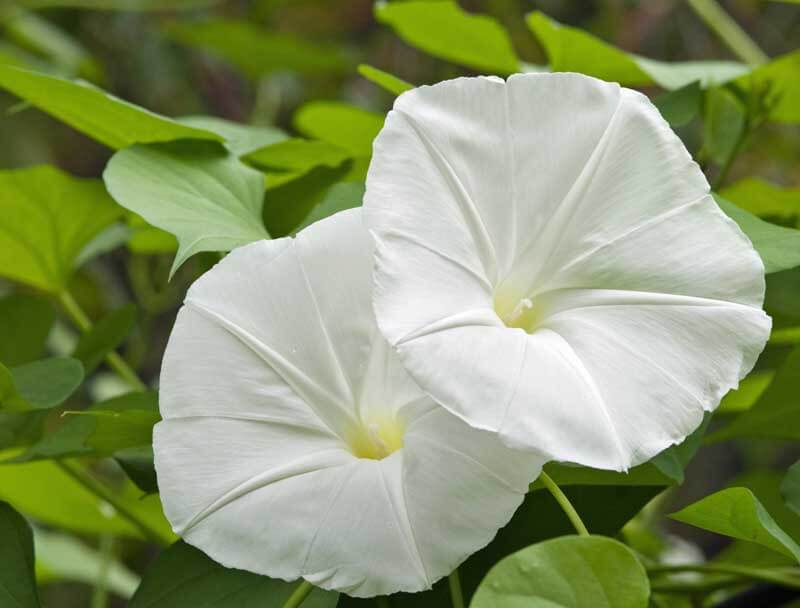
Moon Flower (Ipomoea alba) – Famous for use in moon gardens, moonflower vines are tropical and commonly grown as annuals in temperate zones. They are started from seed and begin to bloom in late summer and continue into fall. The huge, white flowers reach up to 7 inches across and bloom at night to attract the moths that pollinate them. The evening is also when they emit their sweet fragrance. Vines can reach up to 15 feet, so offer them a strong fence or trellis to twine up.
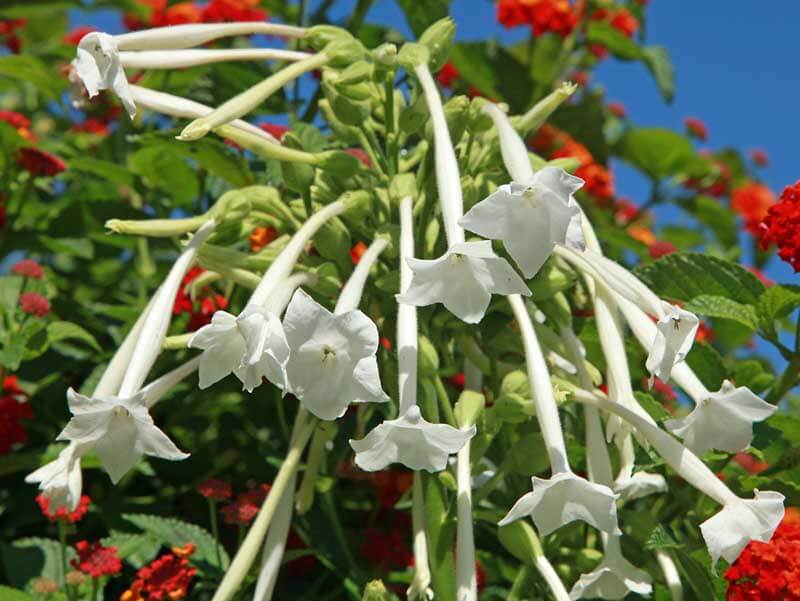 Woodland Tobacco (Nicotiana sylvestris) – Award-winning woodland tobacco is a tall annual reaching up to 4 feet that bears loads of long-tubed white flowers that attract long-tongued moths. Like moonflower, they begin to emit their strong, sweet fragrance in the evening, so plant them where their night scent can be best enjoyed. Woodland tobacco tolerates full to partial sun.
Woodland Tobacco (Nicotiana sylvestris) – Award-winning woodland tobacco is a tall annual reaching up to 4 feet that bears loads of long-tubed white flowers that attract long-tongued moths. Like moonflower, they begin to emit their strong, sweet fragrance in the evening, so plant them where their night scent can be best enjoyed. Woodland tobacco tolerates full to partial sun.
(If you are interested in house plants with fragrance, read our article The Best Fragrant House Plants.)
Growing Scented Flowers and Shrubs
Aside from lily-of-the-valley, all of these plants are sun-lovers that will grow well in fertile soil with good drainage. We recommend amending garden beds with Black Gold Garden Soil or Garden Compost Blend to increase soil fertility. Keep them moderately irrigated after planting and feed them with quality fertilizer for flowering plants. (Click here for detailed steps for planting shrubs.) Container-grown annuals, like sweet alyssum, grow best in all-purpose potting soils with good drainage, such as Black Gold All Purpose Potting Mix.
Plant some of these fragrant garden flowers to make those warm summer days and nights even more enjoyable. Many also make superb cut flowers for indoor enjoyment.


